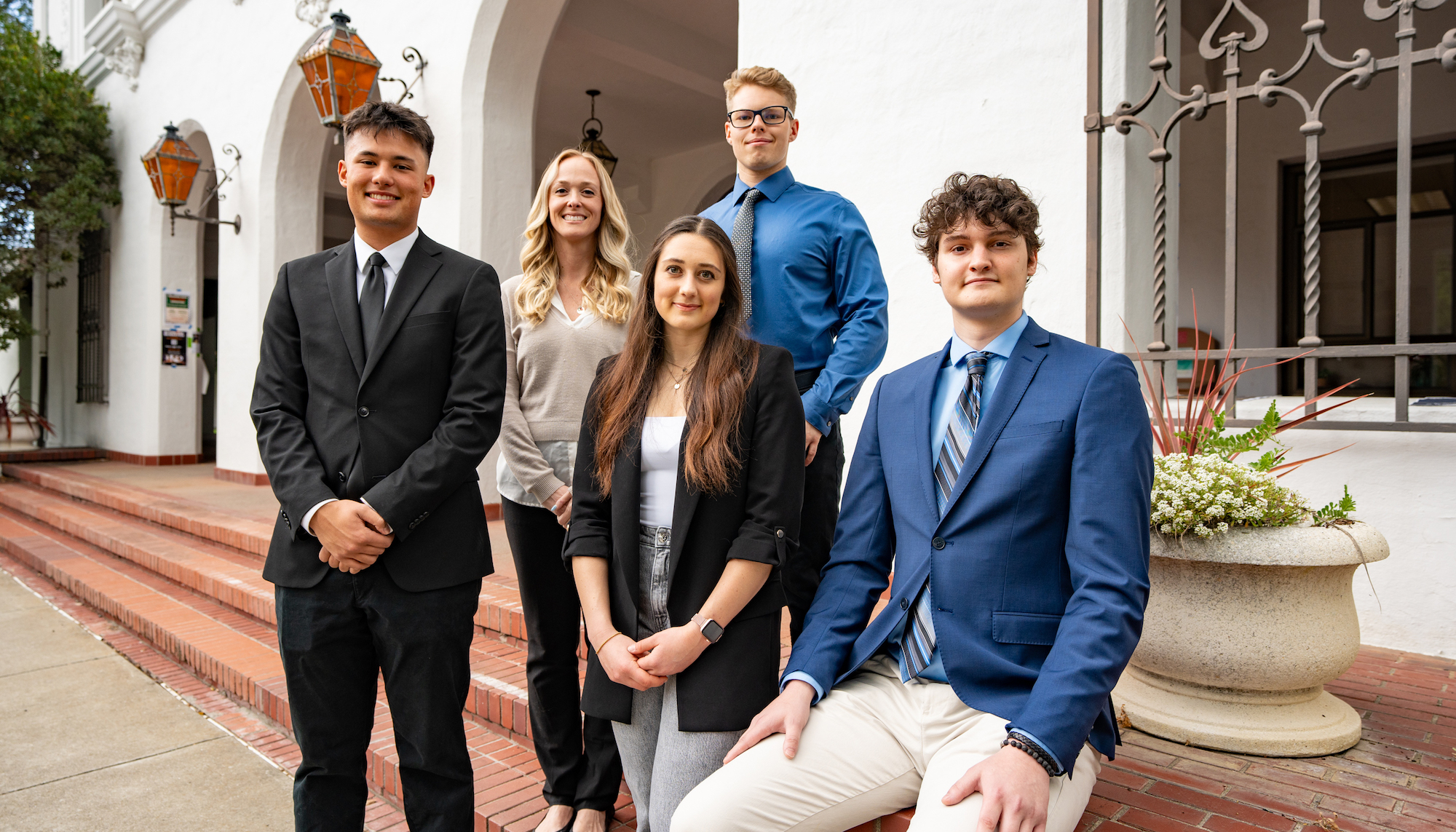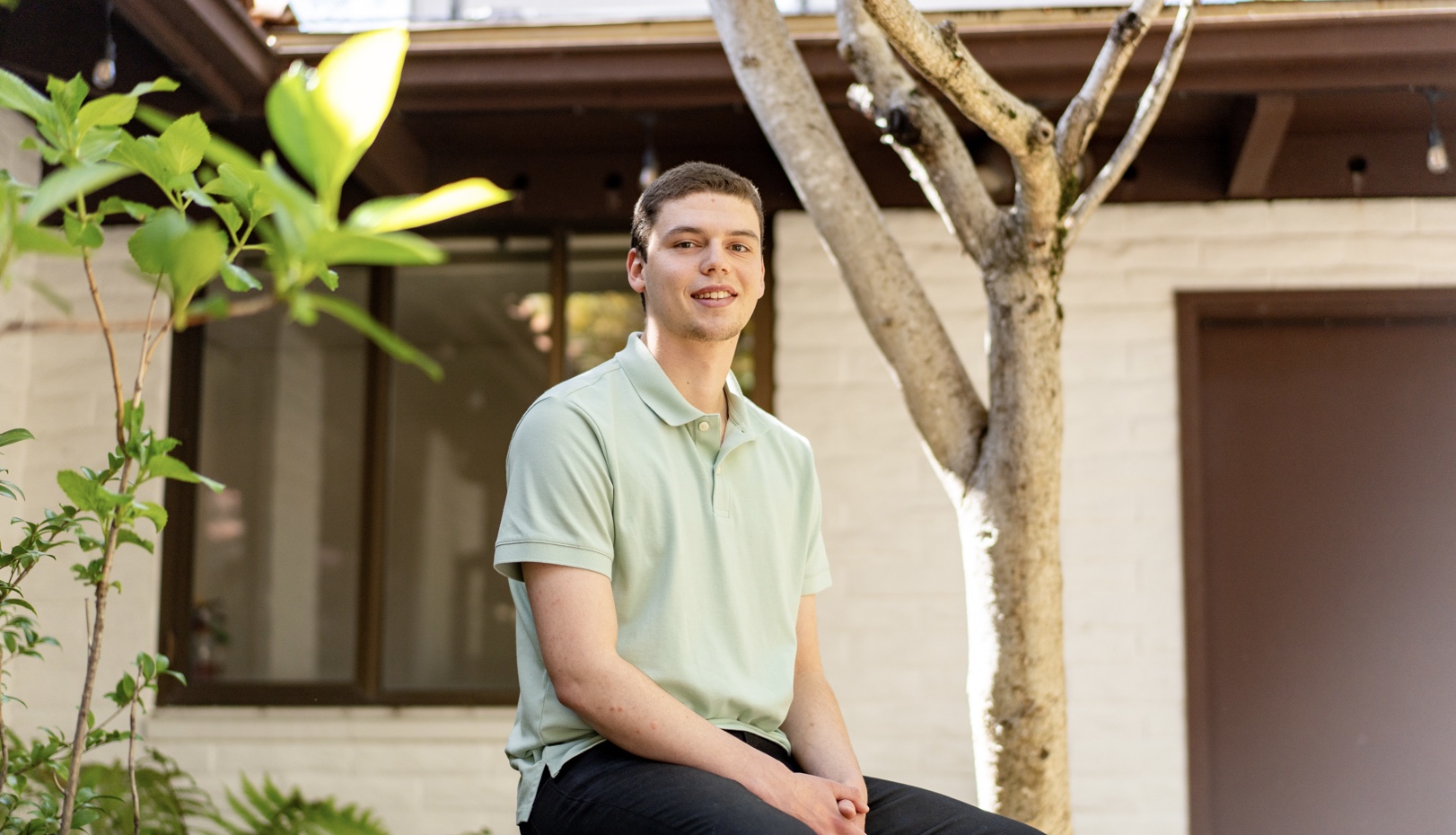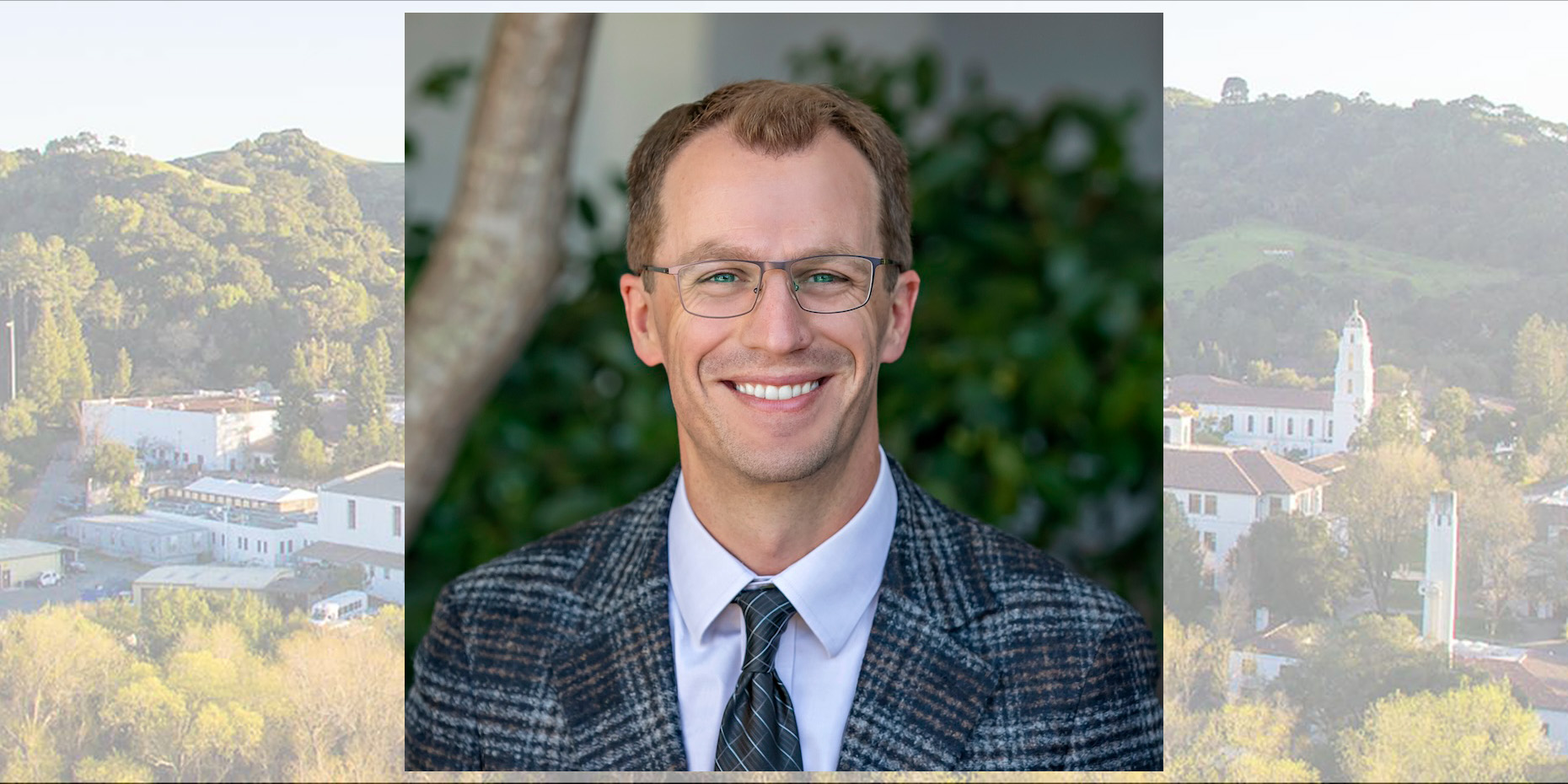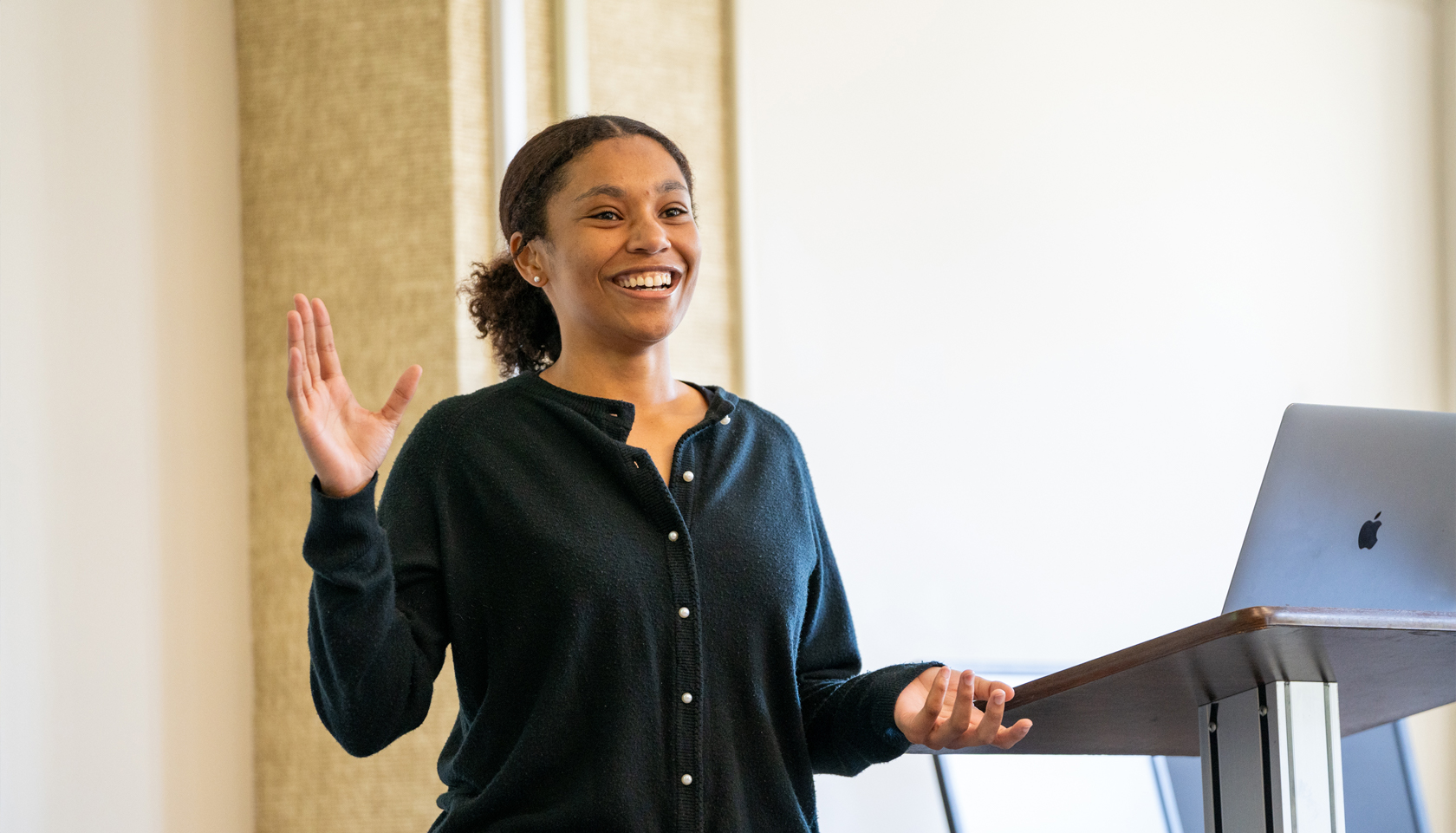
At the 2023 and 2024 competitions, Saint Mary's students gained more than just a hands-on education; they set themselves up for careers in the field. “The future is innovation and the capability of problem-solving," says Safwat Hamad, a business professor and advisor to the SMC team. / Illustration by Ryzhi/iStock
AI for Positive Change: Here’s How SMC Students Strive to Solve Real-World Problems Through an Annual Business Analytics Competition
Using machine learning to analyze data, they have sought to solve food insecurity in fragile economies. They have also analyzed where nursing homes do well—and where they don’t.
Can a computer program help solve food insecurity? Can it help us improve elder care? These are questions students from SMC’s School of Economics & Business Administration have grappled with over the past two years in the annual Business Analytics Competition at Manhattan College in New York.
The competition is held each May and tasks competitors with a different problem to solve using machine learning and AI. In 2023, students were asked to analyze and find solutions for undernourishment in parts of Sub-Saharan Africa, the Caribbean, and South America. In 2024, students examined how nursing homes in the US have changed since the pandemic—and what those changes mean for investors. The competition includes two rounds judged by professionals in data science and data analytics, as well as by experts on the assigned problem, such as food policy or healthcare.
“When they enter the job market, instead of answering interview questions theoretically, they’ll have a story for each question.”
—Professor Safwat Hamad
For the competition, after spending months programming and testing their machine learning programs using real-world data, the SMC teams fly to New York to face off against students from 24 other Catholic universities. As part of the two rounds, students meet leaders from the analytics field, apply classroom theory in a practical setting, and propose solutions to these real-world problems.
The competition is also paired with a conference that includes talks from and conversations with industry leaders; this past spring featured a keynote by Svetlana Reznik, Northeastern Region General Manager of the Data and AI Customer Success Team for Microsoft, who also co-leads the Microsoft's Women's Employee Resource Group in New York and New Jersey.
Safwat Hamad, a professor of Business Analytics and Data Science, has been advising the SMC team for the past two years. He says that the Business Analytics Competition is not just an educational opportunity but a way for students to gather experience and stand out to employers.
“The competition is highly important because it engages students with real-life problems,” Hamad says. “When they enter the job market, instead of answering interview questions theoretically, they’ll have a story for each question.”
Using Machine Learning to Curb Hunger

In the spring of 2023, in the runup to their graduation from Saint Mary’s, Gabriela Tevez ’23 and Catherine Sawyer ’23 represented SMC, as part of a team with Sarah Heitz ’23 and Eleanor Marston ’23. Tevez and Sawyer both majored in Business Administration with concentrations in Finance and Business Analytics respectively. Tevez also minored in Computer Science, giving her an edge when working with AI and programming. Tevez and Sawyer worked primarily alongside Safwat Hamad, as well as SEBA faculty members Mary Alice McNeil and Noha Elfiky.
In their Business Analytics studies, Tevez and Sawyer were taught the importance of good data. Data collection and analysis have become increasingly valuable to the business, health, and intelligence industries, as they allow companies to identify, understand, and optimize patterns.
A key tool in this process is machine learning, or the way an AI program improves itself through the consumption of data, without external programming or aid from humans. Before the program can do that, however, it needs to be trained by humans to recognize and sort important data.
Prior to heading to the competition, the team used a machine learning–based AI model to filter through data on the factors that cause undernourishment within a country. Since the first phase of the project focused on Sub-Saharan Africa, Tevez and Sawyer chose to examine the Republic of Angola. Why? For starters, Angola managed to decrease the prevalence of undernourishment below the average level of other countries in the region. The students compiled their findings and potential solutions into a poster, which the team then presented to a panel of judges.

Phase Two: New Data, Same System—with 24 Hours to Find a Solution
Whereas phase one gave Tevez and Sawyer the time to learn how to use the technology they were given, phase two tested those newfound skills. After presenting their findings from Angola, Tevez and Sawyer were given an entirely new dataset on undernourishment, this time from both the Dominican Republic and Panama. They needed to repeat the process from phase one, coming up with a revised analysis and recommendation for each country—within 24 hours.
Tevez and Sawyer were familiar with the model, so they were able to run the new dataset without much trouble. Eventually, they found that the three countries were, for the most part, unique in terms of what correlated most closely with undernourishment. For the Dominican Republic, their analysis led them to recommend that the government make a greater investment in the national GDP per capita. For Panama, the analysis led them to recommend access to better cooking resources and nutritional education. The final presentation consisted of detailed short-, medium-, and long-term plans for each of the three countries.
“This project gave me more appreciation for the huge amount of research that goes into dissecting issues like this,” Sawyer says. “It helped me prepare for what I'm going to be doing in my future, because this is basically what they do every day.”
Tevez echoes that sentiment. She describes what they undertook as storytelling—molding massive data into a clear picture that communicates what has happened, what’s currently happening, and what may come to be.

Investing in Elder Care
The 2024 competition sent Isaiah Williams ’24 to New York, along with teammates Tanya Dhaliwal ’24, Lauren Stadt ’24, and Owen Houghtelling ’24. The students were asked to investigate the financial performance, ethical standards, and operational practices of nursing homes in the United States, paying attention to the impact of COVID-19 in particular. Based on their findings, they had to make a recommendation to those interested in investing in nursing homes.
Williams, a Data Science major, was first introduced to the competition while taking the Data Science capstone class. “I saw it as an opportunity to learn more about the Data Science and AI industry from not only my peers at SMC, but also from students all over the country,” he says. “And who doesn’t want to go to New York?”
Williams and his teammates fed their machine learning AI data points from nursing homes here in Contra Costa County, examining service quality, health deficiencies, financial information, and COVID-19 vaccine data. Williams was tasked with analyzing the financial state of nursing homes from 2019 to 2021. Seeing that the nursing home industry suffered a significant financial setback during the pandemic, he also identified government policies and performance trends at the time that could have added to the downturn.
Based on these datasets, the team assessed that the nursing homes they studied needed improvements in occupancy rates, quality of care, vaccine rates, and more—which, if undertaken, would make them a better investment. They presented these findings in poster format during the first phase of the competition, where they won an honorable mention for best poster.
“The most exciting part of the competition for me was hearing the constructive feedback from the judging panel after our initial presentation,” Williams says. “After working for the whole semester, it was rewarding to know that our efforts were well appreciated.”
Phase Two: Compare and Contrast

After their initial presentation, the students were given new datasets to examine: the financial and ethical operations of nursing homes in New York and Florida. They had to run the data through their program, then evaluate how homes in the two states performed.
Florida has the highest percentage of the elderly population in the US, and New York has the lowest, so retirees and businesses need to know if nursing homes in these areas are meeting expectations before they invest—or potentially send a loved one there.
Because Williams and his team had done most of the heavy lifting during the first phase, they had no problems making minor alterations to their code to fit the new datasets. These new datasets were also smaller in scale than the ones they used for phase one, so they were quickly able to fix any bugs that arose during the run.
After a long night of coding and analyzing datasets, the team presented their findings to a panel of judges. They concluded that it would be wiser to invest in or send family members to New York nursing homes over those in Florida, based on New York’s higher occupancy rates, better COVID-19 response, and overall quality of care.
As it did for Tevez, this competition taught Williams that the way data is communicated is just as important as the data itself. “Storytelling is an integral part of data science,” he says. “It is not only important to come up with the correct figures and models, but it is also paramount that one is able to use those figures and models in a way that engages the audience in a time-efficient manner.”
Interdisciplinarity: Technology in Concert
While students at Saint Mary’s and other universities take subjects like Data Science, Programming, and Business Ethics as separate courses, the competition requires them to combine the lessons they have learned to solve one problem. “I’m always telling our SEBA students that it’s not about the theory, and it’s not about the technicality,” says Safwat Hamad. “The future is innovation and the capability of problem-solving. We need to combine these two worlds to solve the unsolved problems with our current technology.”
Students’ ability to approach situations with interdisciplinary thinking will not only make them stand out to employers but also make them better problem solvers. In the year since graduating from SMC, Tevez has worked as a financial planning and analysis analyst for Mammoth Biosciences, and she recently completed her MS in Finance and Analytics.
Sawyer has enjoyed the freedom of working temporary office administration jobs for companies like Microsoft and Starbucks. “It’s been nice to work a position for a couple of months to a year and then try something new,” she says. “It’s a good way to try new jobs without it being too serious.”

Williams has found that his confidence has grown after participating in BAC, especially when it comes to public speaking. “Oftentimes, I would be wound very tight before and during a public presentation, but this whole process has taught me not to take every little thing so seriously, as if it were the Super Bowl,” he says. “And it’s taught me to laugh at myself more from time to time, because nobody is perfect.”
Jordan Sapp MFA ’25 is a Graduate Editorial Fellow and Sam Nobile ’25 is a Student Writer with the Office of Marketing and Communications. Write them.





